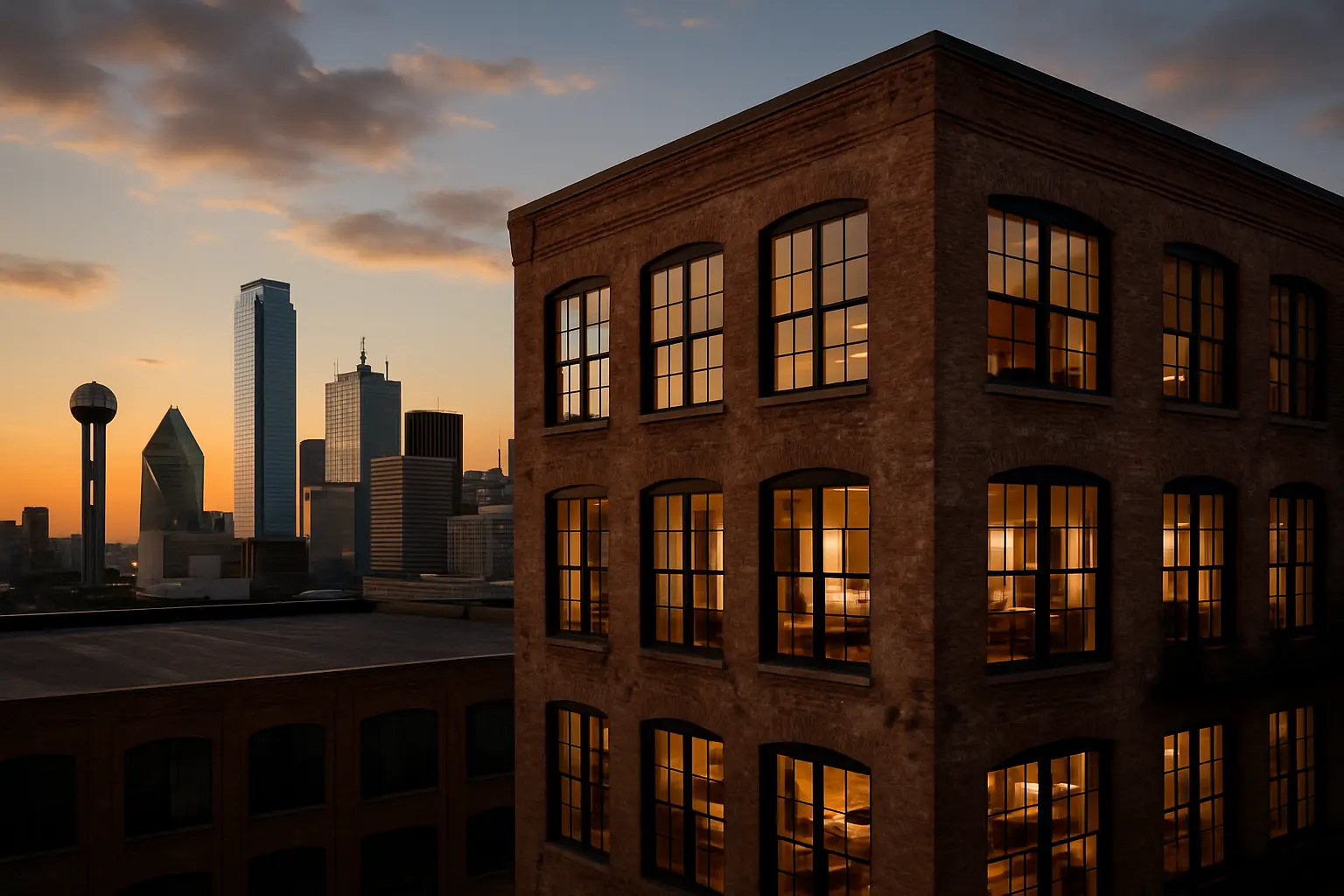From Warehouses to Wealth: Dallas's Commercial-to-Residential Revolution
Discover how savvy investors are transforming industrial spaces into sought-after living communities in the heart of Texas.

The Growing Trend of Adaptive Reuse in Dallas
Dallas's urban landscape is undergoing a remarkable transformation as developers and investors breathe new life into the city's industrial heritage. The adaptive reuse movement has taken hold, turning forgotten warehouses and commercial spaces into vibrant residential communities that combine historical character with modern amenities.
In the Design District and Deep Ellum, former manufacturing facilities are now coveted addresses, featuring exposed brick walls, soaring ceilings, and industrial-chic aesthetics that appeal to young professionals and urban enthusiasts. These conversions preserve Dallas's architectural heritage while meeting the growing demand for unique urban living spaces.
Investment Opportunities and Market Analysis
The numbers tell a compelling story:
- Property value increases of 150-200% post-conversion in prime locations
- Average ROI of 25-30% for well-executed warehouse-to-residential projects
- Rental premiums of 15-20% compared to traditional apartment complexes
Investors are particularly drawn to properties within walking distance of public transportation and entertainment districts. The lower acquisition costs of industrial properties, combined with tax incentives for historical preservation, create attractive opportunities for developers willing to take on these transformative projects.
Success Stories and Transformations
Notable Dallas Conversions
The Continental Gin Building stands as a shining example of successful adaptive reuse. This former cotton gin factory now houses luxury loft apartments while maintaining its industrial character. Similarly, the Lone Star Gas Lofts have become a blueprint for combining historical preservation with modern living standards.
"These projects aren't just about creating housing – they're about preserving Dallas's industrial heritage while building communities," notes a prominent local developer.
Future Development and Growth Prospects
The future looks promising for commercial-to-residential conversions in Dallas. Several areas are prime for transformation:
- South Dallas: Industrial corridors ripe for residential development
- West Dallas: Warehouse districts near Trinity Groves
- East Dallas: Manufacturing zones adjacent to established neighborhoods
Emerging Opportunities
Developers are increasingly focusing on creating mixed-use environments that incorporate retail and community spaces alongside residential units. This approach not only maximizes property value but also creates self-sustaining neighborhoods that attract long-term residents.
The trend shows no signs of slowing, with city planners actively encouraging these conversions through streamlined permitting processes and zoning flexibility. As Dallas continues to grow, these transformed spaces offer a unique solution to urban housing demands while preserving the city's industrial heritage.
Key Considerations for Investors
- Environmental assessment requirements
- Historical preservation guidelines
- Building code compliance for residential conversion
- Community impact studies
As Dallas evolves, these converted spaces are becoming more than just housing – they're becoming landmarks that tell the story of the city's past while pointing toward its future. For investors and residents alike, this commercial-to-residential revolution represents an exciting chapter in Dallas's urban development story.


